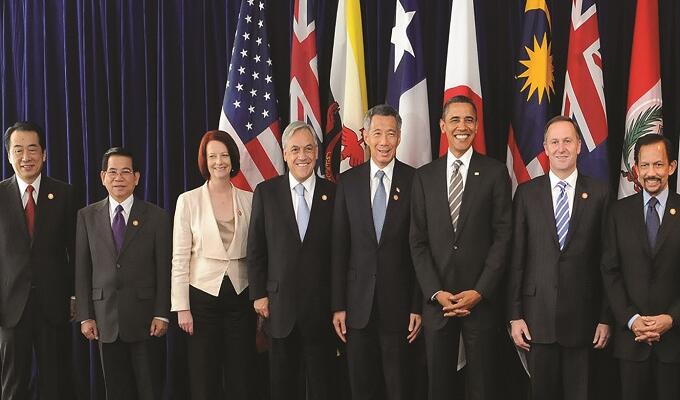

Mega-regional trade agreements: a threat for developing countries and the WTO?
selected countries risks further fragmenting the global trading system
Ambassador Zoellick’s opinion was triggered by frustration following the failure of World Trade Organization (WTO) negotiations in Cancún, Mexico, earlier that month. In his view, ‘won’t-do’ countries had trumped the interests of ‘can-do’ countries in blocking agreement on a multilateral trade agreement that would have lowered trade barriers around the world. The socalled Doha Round eventually resumed but then collapsed again in 2008. Though WTO members finally managed to agree on the Trade Facilitation Agreement in Bali in 2013, the remaining issues on the Doha Development Agenda remained in limbo.
At the time of the Cancún meeting the United States of America had signed six free Mega-regional trade agreements: a threat for developing countries and the WTO? KIMBERLY ANN ELLIOTT, Senior Fellow, Centre for Global Development F trade agreements (FTAs); it negotiated nine more over the ensuing five years. Most were with relatively small countries that wanted to lock in access to their largest export market or to cement relations with the United States after the 9/11 terrorist attacks. Only the agreements with Canada, Mexico and South Korea were of commercial significance, accounting for a third of total United States merchandise trade in 2013.
The recently concluded Trans-Pacific Partnership (TPP) and the ongoing Transatlantic Trade and Investment Partnership (TTIP) negotiations with the European Union (EU) break new ground. For the first time, the largest and richest countries are negotiating preferential trade agreements with one another. The potential implications for developing countries and the multilateral, rules-based trade system depend on whether the negotiations succeed and, if they do, what is in them.
ECONOMIC IMPACTThe direct economic impact for the vast majority of excluded countries will depend on the scope and depth of the provisions negotiated, but it is likely to be relatively small. The potential exception is the impact on poor Asian countries, such as Bangladesh and Cambodia, if Viet nam is able to adapt to the TPP’s restrictive rule of origin for apparel and substantially increase its exports in that sector. The United States could mitigate that impact by extending duty-free, quota-free market access to these least-developed countries as other high-income countries have done.
Given the patterns of trade and the generally low tariffs between the United States and EU, the TTIP poses a lower risk of traditional trade diversion. Rather, the concern is that the emphasis on regulatory cooperation as the key to a successful agreement raises the possibility of regulatory trade diversion. This could come about if efforts to harmonize standards in some sectors result in higher standards that are more difficult for developing countries to meet.
A more likely approach to regulatory cooperation is that the negotiators will try to reach mutual recognition agreements in certain sectors. That could be positive if mutual recognition is also extended to third parties that meet either EU or United States standards. The more likely alternative is that only European and American exporters will be able to take advantage of any such agreements, which will put other exporters at a competitive disadvantage.
Perhaps even more likely is that there will be little more than a hortatory agreement on regulatory issues. The TPP chapter on regulatory coherence focuses only on process and principles (an approach that EU negotiators have rejected as inadequate), is not subject to dispute settlement, and, in the words of the United States Trade Representative’s office, does not ‘require changes to U.S. regulations or U.S. regulatory procedures’.
WHAT IMPLICATIONS?Assuming that there is eventually a TTIP agreement, and that the US Congress ratifies the TPP deal, what are the implications for the WTO? Supporters of the competitive liberalization theory might argue that completion of the mega-regional agreements will spur developing countries to come back to the table in Geneva and revive multilateral trade talks there. But if the United States, European Union and Japan have the TPP and TTIP in hand, would they still be interested in making concessions in multilateral talks? If WTO negotiations remain stalled, will the creeping discrimination uncovered in the Global Trade Alert continue to spread with and further weaken the remaining multilateral disciplines?
The frustration with Doha deadlock in Geneva is understandable. However, negotiating only with ‘can-do’ countries in the short run, risks further fragmenting the global economy. This could lead to lower trade costs from reduced tariffs being offset by higher trade costs due to rules of origin and other trade transactions costs. It also risks undermining the multilateral, rulesbased system the United States helped to create and led for decades.



